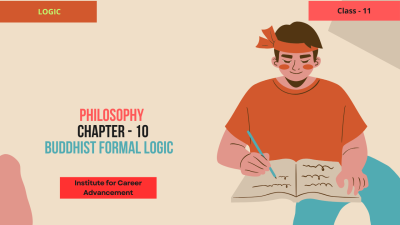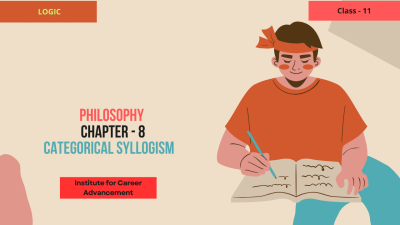Courses


 Compare
Compare
0 Lessons
Hours

 Compare
Compare
Hadului mwtai koklop swnai wngkha swikwrwng Rabindranath thakur o koklopni bisingtwi mwtai no tiui bono khumu mani suri mani raida rogno khursa jak kha.Sai rasai rang swbaiui chini borokrog tangwi aro khanitwi mwtaini mang achukrio.Bono mandob doga soui tonio. Doga phiyogwi bono chwng phung,dibor,sarik khumo,surio, kero chini sak baithang tei nukhungni hamarini bagwi.Phiyaba koklobnai saka giyanni rwbam bai nasigwi mwtai mandobo tongya. Bo tongo kheto – panthoro hachuk- hathaio; je jagarog borokrog dukhu kolomtwi hopung sapung samung tango a jagao.Samung tangnairog haino bono suriui kebo mukti manya, bo chini mangtangni hadului baino khajak.
1 Lessons
Hours

 Compare
Compare
Huk(হুক)kokbom swinai wngkha swikwrwng Shyamlal Debbarma(শ্যামলাল দেববর্মা) o kokbom ni bisingtwi swikwrwng Tiprasarogni tongwrwng agini jora bai tabuk ni jora swlaijak mani kokno khursana nai jak kha.Jora swlai jakma bai baksa twrwk twrwk khe jorani phero khlaiui bahai khe huk khlai chama jorani simi khet khlai chama jorao swlaijak phaikha abono karwi huk khlai chaphuru ni baithangni hukumu mukumu rokbo twrwk twrwk kwmarwrwk sana thangkhe agi huk khlai chaphuru hinkhe huk ni samung tangtwtwi jaduni rwchapmungrog rwchap lai o ehu… hu…hu…khorang khlai aphuru rogo tongthok chathokni bising twi samung tanglaio phiya khet khlai chalai ma puilao khe rwngtwtwi rwngya twi khlai chalaijaja kha. Swikwrwng abono swkang jorani tongthokmung aborok kwma baikha hinwi khursana naijak kha.
1 Lessons
Hours

 Compare
Compare
Kamichang burao(কামিচাঙ বুরাঅ) kokbom swinai wngkha swikwrwngjwk Mangaleswari Debbarma(মঙ্গলেশ্বরী দেববর্মা).O kokbomni bisingtwi imang nuk mano mwkthango mana muchungmani kokno sajak kha.Sana thangkhe borok kha- kamani manuino manna muchungkhai podrepot wansukmung khao phaijago.Khao thaimani o manui mukthango nukjakyakhe imango phano phaiui nukjago.Chandirai bo thuphuru abo haino imang kaisa nugo. Imango nukmani manwi jekhephano mukthango nukjaganw eba mananw hinwi lukurog wanswk phano kubui kubui abotwino wngnai abo hai mungsa kok kwrwi.Tamoni hinba imango hamung siniya lobui pungmatwi borokrokbo hamung siniya Imang nugo.Phiya imangle imang no. Tokha bising Tokha bo hamung siniya lobui pungmatwi borokrogbo hamung siniya imang nugo. Tokha pungmani mungsa bo kukcha kwrwi wngmatwino imango nukmani manuinibo mungsa kukcha kwrwi hinwi sajako.
1 Lessons
Hours

 Compare
Compare
Ang Kokborok koklop swinai wngkha Sunil Debbarma o koklopni bisingtwi chini mani mani kok eba Kokborok kok no bahai khe teibo kuchuk o tisanai abono twi sajak kha. Kok kuchugo tisane thang khe chwng kokborok no hamjak thai kokborok kok bai swimung tei porimung tei sajak mung tongnani nangnai abo hai hinkhe se kwchwng athukri ahai wng mannai
1 Lessons
Hours

 Compare
Compare
Kamaliya Debbarma Khum barsani banta(খুম বারসানি বানতা) koklop swinai wngkha - Kamaliya Debbarma (কমলিয়া দেববর্মা).O koklopni bisingtwi swkang jora ni simi khuk bai khuk o khochogwi phai kerang kothama thaisa kokno kisa naharui sajak kha je bahai khe mwtai ni khum no kholwi huluk bai muphuk wng thangmani kokno tisaui sajak kha.
1 Lessons
Hours

 Compare
Compare
Jadu kolija(জাদু কলিজা) koklop no swinai wngkha Narendra debbarma bai thumjak. Jadu kolija(জাদু কলিজা) wngkha Tipra dophani luku rwchapmung.Sirisiti ni simi khuk bai khuk o rwchapjagwi kochokgwi phaimani abagwi bono khukni kokrwibai hinwi bo saui mano.O jadu kolija ni bisingtwi chwng swkang jorani tongmung- chamung,kanmung- chummung,tangmung-twimung rokno nugo.
1 Lessons
Hours

 Compare
Compare
Buddhist Formal Logic is a sophisticated system of reasoning developed by ancient Indian Buddhist philosophers, notably Dignāga and Dharmakīrti. It offers a unique perspective on the nature of knowledge and the methods of valid inference. Key Concepts: Pramāṇa (Proof or Evidence): Buddhist logic identifies four primary sources of knowledge: Pratyakṣa (Perception): Direct, unmediated awareness of objects. Anumāna (Inference): Drawing conclusions based on reason and evidence. Upamāna (Comparison): Inferring the nature of an object by comparing it to a known object. Śabda (Word or Testimony): Acquiring knowledge through reliable sources, such as scriptures or the words of wise teachers. Hetucakra (Wheel of Reason): This is a logical framework used to analyze and evaluate arguments. It involves identifying the hetu (reason) and sādhya (conclusion) of an argument, and then examining the relationship between the two. Apoha (Negation): A central concept in Buddhist logic, apoha refers to the process of defining a thing by what it is not. For example, a "cow" is not a horse, a goat, or any other animal. Tarka (Dialectical Reasoning): Buddhist logicians engaged in rigorous debates and discussions to refine their understanding of reality and to test the validity of their arguments. By studying Buddhist formal logic, students can develop a sharper mind, improved critical thinking skills, and a deeper appreciation for the diversity of human thought. বৌদ্ধ আনুষ্ঠানিক যুক্তি হল প্রাচীন ভারতীয় বৌদ্ধ দার্শনিক, বিশেষত দিগঙ্গ এবং ধর্মকীর্তি দ্বারা বিকশিত যুক্তির একটি পরিশীলিত ব্যবস্থা। এটি জ্ঞানের প্রকৃতি এবং বৈধ অনুমানের পদ্ধতি সম্পর্কে একটি অনন্য দৃষ্টিভঙ্গি প্রদান করে। মূল ধারণাগুলিঃ প্রমাণ (প্রমাণ বা প্রমাণ) বৌদ্ধ যুক্তি জ্ঞানের চারটি প্রাথমিক উৎস চিহ্নিত করেঃ প্রত্যক্ষা (উপলব্ধি) বস্তুর প্রত্যক্ষ, মধ্যস্থতাহীন সচেতনতা। অনুমানা (অনুমান) যুক্তি ও প্রমাণের ভিত্তিতে সিদ্ধান্ত গ্রহণ। উপমান (তুলনা) একটি পরিচিত বস্তুর সাথে তুলনা করে একটি বস্তুর প্রকৃতি উল্লেখ করা। শব্দ (শব্দ বা সাক্ষ্য) শাস্ত্র বা জ্ঞানী শিক্ষকদের শব্দের মতো নির্ভরযোগ্য উৎসের মাধ্যমে জ্ঞান অর্জন করা। হেতুকাক্রা (যুক্তির চাকা) এটি একটি যৌক্তিক কাঠামো যা যুক্তি বিশ্লেষণ এবং মূল্যায়ন করতে ব্যবহৃত হয়। এর মধ্যে একটি যুক্তির হেতু (কারণ) এবং সাধ্য (উপসংহার) চিহ্নিত করা এবং তারপরে উভয়ের মধ্যে সম্পর্ক পরীক্ষা করা জড়িত। অপোহা (নেতিবাচকতা) বৌদ্ধ যুক্তির একটি কেন্দ্রীয় ধারণা, অপোহা বলতে কোনও জিনিস যা নয় তার দ্বারা সংজ্ঞায়িত করার প্রক্রিয়াটিকে বোঝায়। উদাহরণস্বরূপ, একটি "গরু" ঘোড়া, ছাগল বা অন্য কোনও প্রাণী নয়। তর্ক (দ্বান্দ্বিক যুক্তি) বৌদ্ধ যুক্তিবিদরা বাস্তবতা সম্পর্কে তাদের বোধগম্যতা পরিমার্জন করতে এবং তাদের যুক্তির বৈধতা পরীক্ষা করার জন্য কঠোর বিতর্ক এবং আলোচনায় নিযুক্ত ছিলেন। বৌদ্ধ আনুষ্ঠানিক যুক্তি অধ্যয়নের মাধ্যমে, শিক্ষার্থীরা একটি তীক্ষ্ণ মন, উন্নত সমালোচনামূলক চিন্তাভাবনা দক্ষতা এবং মানুষের চিন্তার বৈচিত্র্যের জন্য গভীর উপলব্ধি বিকাশ করতে পারে।
0 Lessons
Hours

 Compare
Compare
A categorical syllogism is a form of deductive argument consisting of three categorical propositions: two premises and a conclusion. Each proposition contains two terms: a subject term and a predicate term. Key Components: Major Term: The predicate of the conclusion. Minor Term: The subject of the conclusion. Middle Term: The term that appears in both premises but not in the conclusion. Example: Major Premise: All humans are mortal. Minor Premise: Socrates is a human. Conclusion: Therefore, Socrates is mortal. Rules for Valid Categorical Syllogisms: Three Terms Rule: A valid syllogism must have exactly three terms, each used in the same sense throughout. Distribution Rule: The middle term must be distributed at least once in the premises. No Negative Conclusion from Two Affirmative Premises: If both premises are affirmative, the conclusion cannot be negative. If One Premise is Negative, the Conclusion Must Be Negative: If one of the premises is negative, the conclusion must also be negative. If the Conclusion is Negative, One Premise Must Be Negative: If the conclusion is negative, at least one premise must be negative. By studying categorical syllogisms, we can become more skilled in analyzing arguments, making sound judgments, and communicating effectively. একটি শ্রেণীগত শব্দাংশ হল তিনটি শ্রেণীগত প্রস্তাব নিয়ে গঠিত অবরোহী যুক্তির একটি রূপঃ দুটি ভিত্তি এবং একটি উপসংহার। প্রতিটি প্রস্তাবে দুটি পদ থাকেঃ একটি বিষয় শব্দ এবং একটি প্রেডিকেট শব্দ। মূল উপাদানঃ মেজর টার্মঃ উপসংহারের পূর্বাভাস। মাইনর টার্মঃ উপসংহারের বিষয়। মধ্য মেয়াদিঃ যে শব্দটি উভয় প্রাঙ্গণে উপস্থিত হয় কিন্তু উপসংহারে নয়। উদাহরণঃ প্রধান ভিত্তিঃ সমস্ত মানুষই মরণশীল। ছোট প্রেক্ষাপটঃ সক্রেটিস একজন মানুষ। উপসংহারঃ অতএব, সক্রেটিস মরণশীল। বৈধ শ্রেণীগত সিলেজিজমের নিয়মাবলীঃ তিনটি শর্তের নিয়মঃ একটি বৈধ সিলেজিজমের অবশ্যই ঠিক তিনটি শব্দ থাকতে হবে, প্রতিটি একই অর্থে ব্যবহৃত হয়। বণ্টনের নিয়মঃ মাঝারি মেয়াদটি অবশ্যই প্রাঙ্গনে অন্তত একবার বণ্টিত হতে হবে। দুটি ইতিবাচক প্রেক্ষাপট থেকে কোনও নেতিবাচক উপসংহার নেইঃ যদি উভয় প্রেক্ষাপটই ইতিবাচক হয়, তবে উপসংহারটি নেতিবাচক হতে পারে না। যদি একটি প্রেক্ষাপট নেতিবাচক হয়, তবে উপসংহারটি অবশ্যই নেতিবাচক হতে হবেঃ যদি পরিসরগুলির মধ্যে একটি নেতিবাচক হয়, তবে উপসংহারটিও অবশ্যই নেতিবাচক হতে হবে। যদি উপসংহারটি নেতিবাচক হয়, তবে একটি ভিত্তি অবশ্যই নেতিবাচক হতে হবেঃ যদি উপসংহারটি নেতিবাচক হয়, তবে কমপক্ষে একটি ভিত্তি অবশ্যই নেতিবাচক হতে হবে। শ্রেণীবদ্ধ শব্দাংশ অধ্যয়ন করে, আমরা যুক্তি বিশ্লেষণ, সঠিক বিচার এবং কার্যকরভাবে যোগাযোগে আরও দক্ষ হতে পারি।
0 Lessons
Hours